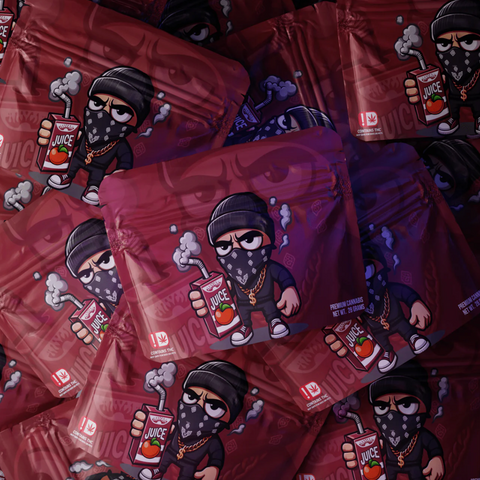
Embark on a fascinating journey through the realm of stand up pouches, the unsung heroes in the packaging industry that have revolutionized how we store and display products. From the bustling supermarket shelves to your kitchen pantry, these pouches have become a staple in our daily lives.
This comprehensive guide is your all-access pass to understanding everything about stand up pouches, from their inception to their functional design, and the impact they have on our environment and consumption habits.
What is the History of Stand Up Pouches?
The story of stand up pouches is a fascinating one. Originating in the 1960s, their journey to popularity really took off in the early 2000s with advancements in materials and printing. Today, they're a symbol of modern packaging, balancing functionality with aesthetics.
What is a Stand Up Pouch Called?
Stand up pouches, often known as mylar bags in the packaging world, are not just bags – they're a testament to ingenious design. Featuring a clever bottom gusset, these pouches proudly stand upright on shelves, showcasing their contents like a billboard. They're the stars of the packaging world, combining practicality with visual appeal.
What are the Advantages of Stand Up Pouches?
Why have stand up pouches become the darling of the packaging industry? Their benefits are manifold:
- Space Savers: Their upright stance means they occupy less shelf real estate.
- Guardians of Freshness: Crafted to fight off moisture, air, and light, they keep contents fresh longer.
- Ease of Use: Features like zip locks and tear notches make them incredibly user-friendly.
- Light on the Planet: They often use fewer resources in production compared to rigid containers.
- Branding Canvases: Their ample surface area is a playground for eye-catching designs and branding.
What are the Disadvantages of Pouch Packaging?
Every hero has its Achilles heel, and for pouch packaging, it’s the environmental and durability concerns. Some materials aren't easily recycled, and while pouches are robust, they can be prone to damage under certain conditions. Plus, they can sometimes be more expensive than traditional packaging.
What is the Difference Between a Flat Pouch and a Stand Up Pouch?
In the world of flexible packaging, stand up pouches and flat pouches are like two sides of the same coin. While flat pouches are great for compactness and single-use items, stand up pouches bring the drama with their self-standing ability, making them perfect for products that need to make a statement on the shelf and require more volume.
How do You Use Stand Up Pouches?
Using stand up pouches is a breeze. They're the go-to for a variety of products – think coffee beans, snacks, pet food, and even laundry detergents. The process is simple: fill, seal, and they’re ready to hit the shelves. And for the end user, accessing the product is just as easy, often with a simple zip or tear.
How are Stand Up Pouches Sealed?
The magic of stand up pouches lies in their sealing. Heat sealing is the most common method, ensuring freshness and creating a tamper-evident barrier. Some pouches come with innovative resealable zippers, adding to their convenience and extending product life even after opening.
How are Stand-Up Pouches Printed?
Printing on stand-up pouches is where creativity meets technology. Using advanced techniques like flexography and digital printing, these pouches turn into vibrant canvases, telling stories and catching eyes.
What are Stand-Up Pouches Made Of?
What’s in a stand-up pouch? A blend of plastic films, foil, and sometimes paper, all chosen for their ability to protect, flex, and showcase designs. Recent trends also include sustainable materials, pushing the envelope in eco-friendly packaging.
What are Pouches Used For?
The uses of pouches are as varied as the products they hold. From food and drink to beauty products and household cleaners, stand up pouches have found their way into almost every aspect of our daily lives, thanks to their versatility and practicality.
What are Kraft Stand Up Pouches?
Kraft stand up pouches bring an earthy, organic vibe to the table. Made from Kraft paper, they offer a sturdy, eco-friendly packaging solution, perfect for brands looking to project a natural, eco-conscious image.









Leave a comment